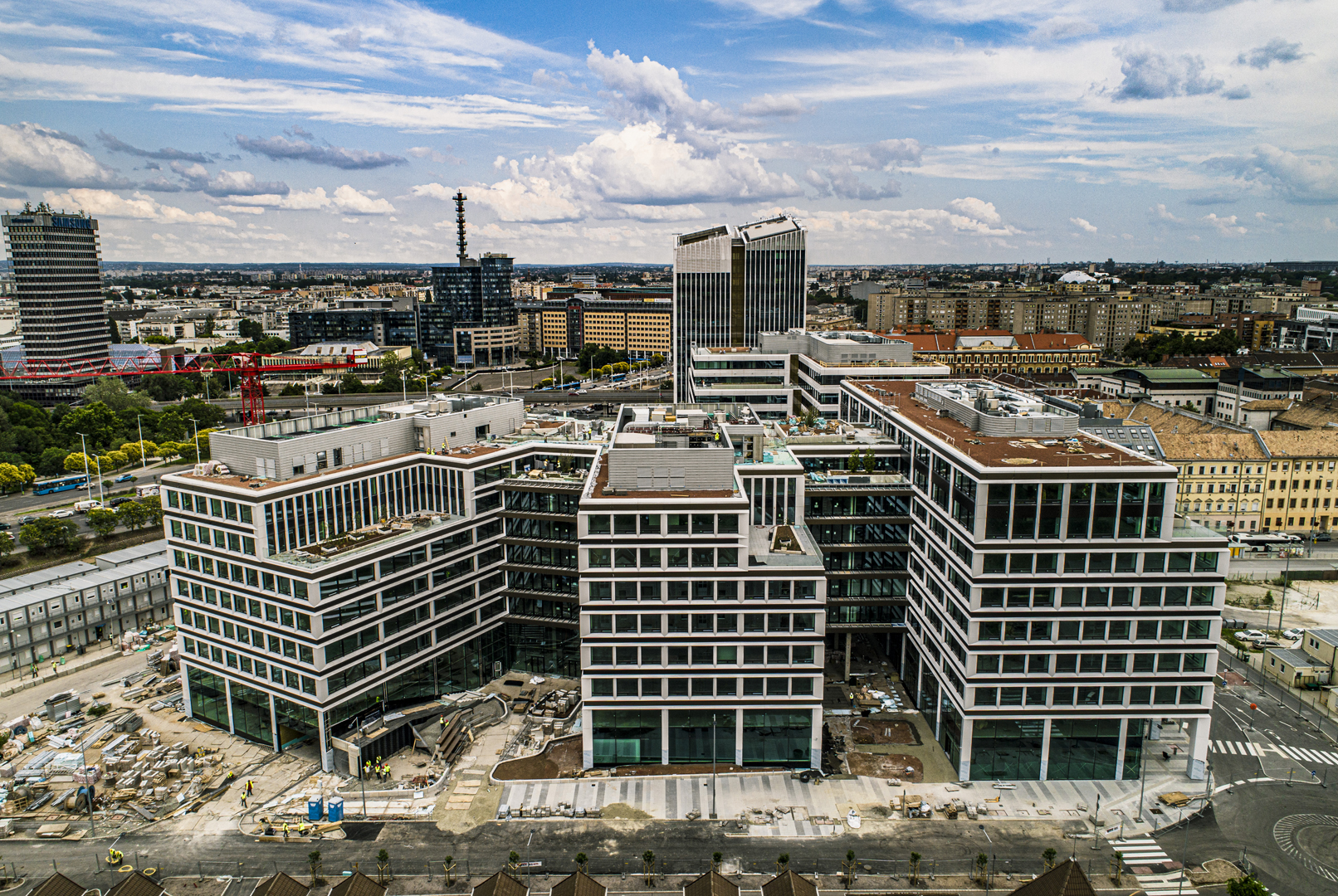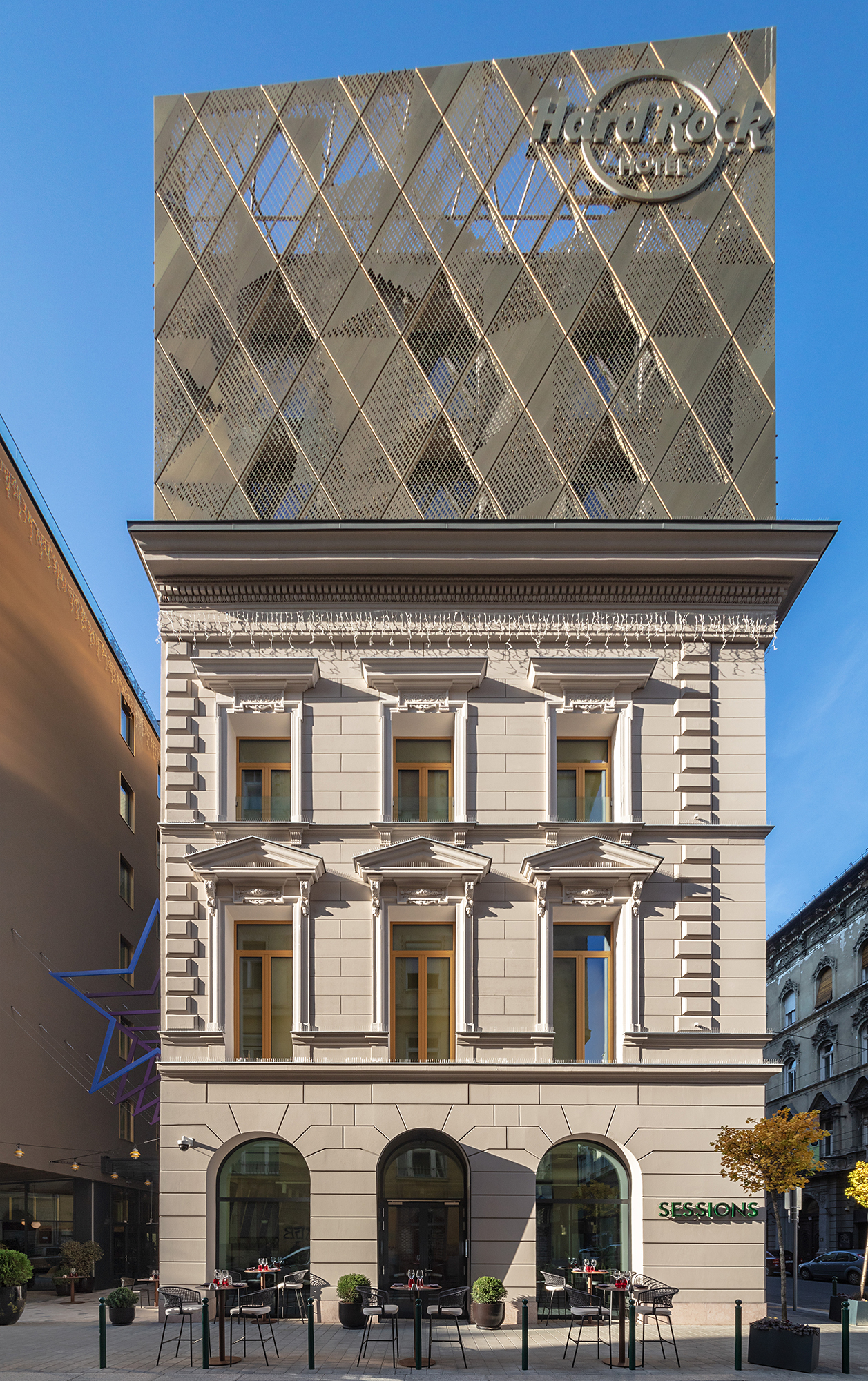Analysts Look to 2021 for Recovery in Real Estate Markets

Agora Budapest
Real estate editor Gary Morrell speaks with market professionals operating in Hungary about the prospects for the development and investment markets this year after a difficult 2020.
An improvement in the investment market is anticipated with the widespread use of a COVID vaccine in the view of most analysts. The logistics and office sectors are seen as being the most favorable positions for a post-COVID crisis environment.
“In 2020 we experienced a fall in the volume of Hungary investment deals and the market expects a recovery around springtime, when the economy will calm down with the arrival of vaccine,” says Csaba Zeley, head of asset management at ConvergenCE.
For 2020, CBRE traced around EUR 1 billion in income producing assets transacted for Hungary: 60% for office; 15% for industrial; 15% for the hotel sector; and 7% for retail. The consultancy has already traced an investment pipeline of about EUR 700 million in ongoing deals likely to close in the first half of this year.
Industrial has overtaken retail in terms of popularity, although it suffers from a lack of available assets. Office remains the asset sector of choice, with deals for the 70,000 sqm first phase of Agora by HB Reavis and the 20,700 sqm Building “F” at Váci Greens by Atenor ongoing according to Gábor Borbély, head of business development and research at CBRE Hungary.
Mike Edwards, head of capital markets at Cushman & Wakefield Hungary, argues that, all being well with regard to the COVID environment, Hungary will get back to above EUR 1.5 bln in annual investment volume.
Eston International agrees, saying, “The Hungarian property investment market has had a great series of three record-level years, so a correction had been expected in advance. Annual investment turnover may slightly exceed EUR 1 bln, representing a nearly 50% drop from 2019 volume, but investors’ activity is picking up and funding still seems abundant. Many deals that have been postponed are expected to be closed in the first half of 2020.”
Colliers estimate for 2020 is in line with Eston’s. “It is important to highlight that more acquisitions have now slipped over to the next year, which will boost the volumes in early 2021,” comments Bence Vécsey, head of capital markets at Colliers Hungary.
With regard to yields, CBRE expects industrial to compress to sub-7% and 6.5% at the prime end. Office is expected to be at 5.5% for prime, with retail at 6-6.5%, although no assets are seen as being available.
“Prime offices will likely enjoy a slight rebound in cap rates from their current contracted prices, slightly off-setting the negative changes in real rents. Logistics warehouses, as the new safe haven, are anticipated to mature to around 6.75% yields or better in Hungary. There is no wide consensus on where cap rates on shopping centers or hotels will stand, hence each opportunity will need to be thoroughly analyzed,” says Vécsey.
“Colliers expects a strong uptick in logistics deals and even offices. We left the year [2020] on a positive note, expecting activity to increase in 2021, but pricing in general will likely remain below levels of 2018 or 2019 given pressure on occupancy, rents and increased return expectations by investors,” he adds.
Domestic capital is expected to maintain a significant position according to Zeley of ConvergenCE. Local investors are supported by their thorough knowledge of the characteristics of the Hungarian market, while international investors tend to draw parallels between different markets of the region. ConvergenCE is planning to strengthen its domestic investments.
Analysts at Cushman predict that, while the full economic impact of the crisis for Central Europe may take one to two years, there is sentiment for the real estate market to bounce back more rapidly in the second and third quarters of 2021. A region-wide investment total is regarded as difficult to predict.
“But the best guestimate is similar to this year, maybe slightly more. We expect the first three to six months to remain slow and then transactional activity to increase in the second half as pressure of under deployed capital is pushed out, but there is always a time lag of closures,” concludes Jeff Alson, head of CEE capital markets at Cushman & Wakefield.
Office
CBRE estimates the 2001-2002 office pipeline at around 500,000 sqm, split evenly across the years. “Developers are going ahead with the delivery of shell and core and with the securing of preleases the financing of fit-out is possible,” comments Gábor Borbély.
Eston International expects office development to slow down in line with declining demand due to uncertainty of future office usage standards. Previous plans included nearly 240,000 sqm of offices to be completed in 2021; however, a development volume
close to 100,000 sqm seems more realistic, Eston says.
These thoughts are reflected by Colliers, from a CEE perspective. “Depending on how the situation with the pandemic evolves over the next six to 12 months, we might expect to see some delays to projects that have not yet commenced construction. Office projects that require a certain level of pre-lease in order to secure development financing could also potentially expect some delays,” comments Kevin Turpin, director of CEE research at Colliers International.
“Currently, the biggest question is how working trends and habits will change in the near future. I hear from more and more companies, that home-office will become partially their standard, also after the pandemic, so they can save significant amount on office space lettings etc., but we will see during the upcoming year where the trends are going to,” comments Zsombor Barta, president of the Hungarian Green Building Council.
According to Peter Számely, executive director of finance at Hypo Noe Landesbank, a developer can only get a use permit in Hungary if a certain level of energy efficiency is provided.
“This is, on the legislative side, a kind of push factor. On the demand side, more and more end-users require certain green building specification, which may be over and above the legislative level. Developers and investors must be aware of this, when pursuing with a project or with an investment.”
Barta adds: “It is without question that sustainability will be a dominating aspect of the upcoming years and is therefore also an increasing factor in investments as well. Also, financial institutions are implementing green financing structures more and more; again, a framework, which requires the implementation of sustainability and sustainable aspects.”
From a developer perspective, Nikolett Püschl, leasing and development director at Atenor Hungary, argues that sustainability in the COVID-19 environment is further evolving and getting more attention, together with the importance of health and safety and contactless technical solutions.
Currently, the main focus is on building machinery, especially the air handling systems, which should the most energy efficient possible and 100% free of mixing fresh and used air.
“For example, in all of the projects of Atenor, these kind of systems have been installed, which is now very helpful. In terms of fit-out and interior design we follow the newest and the most ergonomic trends with a main focus on modernity, efficiency and multi-functionality,” Püschl says.
“Property managers are involved in elaborating more and more smart contactless solutions and also facilitating the necessary social distancing. Also more new practices, rules, measures will be adapted in relation to health and safety in the construction environment,” she adds.
Prologis Park Budapest-Harbor
Industrial
Many people believe that, while office will be in demand again in the future, it will be to a lesser extent than in previous years. Logistics is the clear winner of the current situation and this will be continuing over 2021, says Számely, of Hypo Noe Landesbank.
Gábor Halász-Csatári, head of industrial & logistics at Cushman & Wakefield Hungary, agrees with that assessment.
“Logistics and ecommerce requirements are likely to drive the Budapest market in the coming six to 12 months, while the countryside will be dominated by industrial, manufacturing and production investments, many of them tied to the automotive sector,” he says.
“Cushman forecasts a healthy development pipeline for Budapest especially with the expected new market entrants delivering significant new stock over the coming months,” Halász-Csatári comments.
CBRE have traced a strong pipeline of 200,000 sqm for the Budapest area with no real developer-led market in the regions. Logistics developments may set a record with a completion of 150,000 sqm plus, according to Eston International.
“We expect to see speculative developments coming back to the market with technically no vacancy in modern logistics parks and dynamic demand from service providers and retailers,” the agency says.
“As for the prospects, our COVID-19 special report series suggests that the pandemic has accelerated changes in the retail environment and has a significant influence on logistics real estate. We expect that the pandemic-related slowdown in demand will not last long since logistics real estate is poised to benefit from the emergence of e-commerce,” concludes Paweł Sapek, regional head for Central Europe at Prologis.

Hard Rock Hotel Budapest
Hotel
CBRE have traced a provisional development pipeline of 3,340 hotel rooms across 27 hotels in Hungary due to complete by the end of 2022. Budapest, with a 75% plus share of this pipeline, is the primary destination for hotel developers and operators.
“Demand is slow as the capital is suffering from a lack of international travel, which will not return until 2022,” says Gábor Borbély.
Bálint Erdei, founder and CEO of Redwood Real Estate Holding, is planning a soft opening of the Hard Rock Hotel Budapest in summer. He sees a slow recovery from the second half of 2021 with a potential 50-60% occupancy rate at Hard Rock Hotel Budapest by 2022, moving upwards to a projected 70-75% rate by 2023.
Retail
Although e-commerce is seen as a threat to bricks and mortar retail, the proportion of online shopping is relatively low in Hungary compared to Northern Europe. Euromonitor places online retail activity here at 8-9% with an estimated predicted rise to 10-12% by 2024. In the view of Cushman & Wakefield, retailer activity is expected to be moderate, with firms rationalizing their portfolios.
The first major Budapest shopping center delivery for several years, the 55,000 sqm Etele Plaza by Futureal, now has a rescheduled handover target of 2021/2022. Analysts say the project is in a good location, well designed and will have a well-conceived tenant mix.
“The low industrial rate environment will maintain interest for real estate in 2021. As soon as the measures introduced to fight the pandemic start to be relaxed, the economy is expected to develop sharply,” concludes Szamély.
This article was first published in the Budapest Business Journal print issue of January 15, 2021.
SUPPORT THE BUDAPEST BUSINESS JOURNAL
Producing journalism that is worthy of the name is a costly business. For 27 years, the publishers, editors and reporters of the Budapest Business Journal have striven to bring you business news that works, information that you can trust, that is factual, accurate and presented without fear or favor.
Newspaper organizations across the globe have struggled to find a business model that allows them to continue to excel, without compromising their ability to perform. Most recently, some have experimented with the idea of involving their most important stakeholders, their readers.
We would like to offer that same opportunity to our readers. We would like to invite you to help us deliver the quality business journalism you require. Hit our Support the BBJ button and you can choose the how much and how often you send us your contributions.






.jpg)

